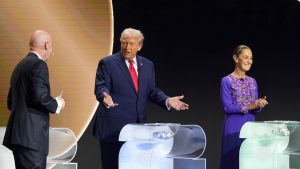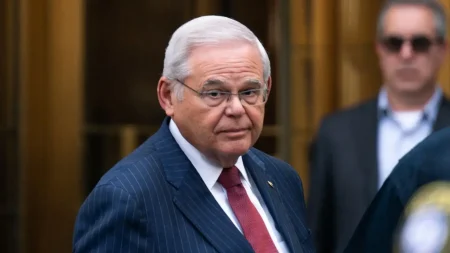Navigating a Path to Peace Through Unconventional Leadership
In the current geopolitical landscape, what appears to be an unavoidable collision between major powers deserves closer examination. The trajectory we’re on wasn’t predestined by history or circumstance, but rather emerged from specific policy choices and approaches to international relations. Donald Trump’s unconventional approach to diplomacy, while often criticized for breaking established norms, might actually contain elements that could help avert conflict and forge a more peaceful path forward. His willingness to question longstanding assumptions about America’s role in the world and engage directly with adversaries represents a departure from traditional diplomatic frameworks that, in some cases, have perpetuated tensions rather than resolved them.
The notion that great power conflict is inevitable stems partly from historical patterns and partly from theoretical frameworks like the “Thucydides Trap,” which suggests that when a rising power threatens to displace an established one, war often follows. However, history also shows numerous examples where expected conflicts were avoided through creative diplomacy, mutual accommodation, and leadership willing to break from established patterns. Trump’s presidency demonstrated both the risks and potential benefits of norm-breaking in international relations. By questioning NATO contributions, directly engaging with North Korea, and rethinking trade relationships with China, he disrupted conventional thinking about how superpowers should interact. While many of these approaches generated controversy, they also created openings for new diplomatic paradigms that might help defuse tensions that have been building under more traditional approaches.
The established international order has increasingly struggled to address emerging challenges like technological competition, climate change, and pandemic response. These global issues require cooperation even among rivals, suggesting that a purely competitive framework is insufficient. Trump’s transactional approach to international relations, focusing on specific deals rather than broader ideological contests, could potentially offer a pragmatic framework for cooperation even amid strategic competition. By focusing on concrete interests rather than abstract values, it might be possible to compartmentalize relationships – competing in some areas while cooperating in others – in ways that reduce the risk of comprehensive confrontation. This doesn’t require abandoning values, but rather recognizing that peaceful coexistence requires accepting differences while finding specific areas for mutual benefit.
Current tensions between major powers have been exacerbated by rigid ideological positions and institutional inertia. Traditional diplomatic channels sometimes reinforce problems rather than solve them, especially when they become focused on process rather than outcomes. Trump’s willingness to bypass traditional channels – meeting directly with North Korea’s leader, for instance – demonstrated that diplomatic norms themselves sometimes become obstacles to progress. While such approaches carry risks, they also reflect a recognition that extraordinary challenges may require extraordinary measures. The complex, multipolar world we inhabit today doesn’t align well with Cold War-era diplomatic frameworks. A more flexible approach that prioritizes results over process could help identify creative solutions to seemingly intractable problems, particularly when conventional wisdom has led to dangerous impasses.
Peace requires not just avoiding war but building sustainable relationships that can weather disagreements. Trump’s emphasis on national sovereignty and mutual respect, despite sometimes being expressed in controversial ways, contains elements that could contribute to more stable international relations. By acknowledging that different nations have legitimate interests and right to pursue their own development paths, this approach potentially offers a framework for coexistence that doesn’t demand ideological conformity. The most successful periods of international peace have typically involved recognition of spheres of influence and acceptance of differences, rather than attempts to impose uniform values globally. A more pragmatic approach focused on managing differences rather than eliminating them might better serve the cause of peace than insisting on universal adoption of particular governance models or values.
Looking forward, avoiding unnecessary conflict requires leadership willing to question assumptions and explore unorthodox solutions. The stakes are too high to allow diplomatic inertia or ideological rigidity to narrow our options. Trump’s willingness to break with convention, while controversial in many respects, demonstrated that alternative approaches to international relations are possible. The path to peace likely lies not in perfecting existing frameworks but in selectively incorporating new approaches that address contemporary challenges. By combining the best elements of traditional diplomacy with a willingness to reconsider fundamental assumptions, leaders can chart a course away from seemingly inevitable conflict. What appears to be a collision course is, in reality, a series of choices – and different choices, including some that challenge diplomatic orthodoxy, might lead to more peaceful outcomes than currently seem possible.











